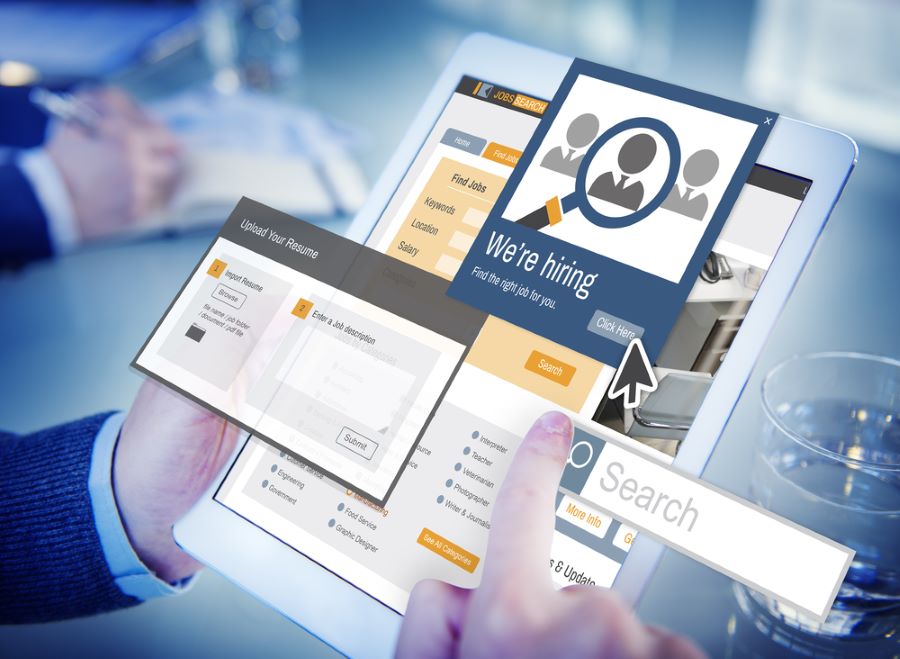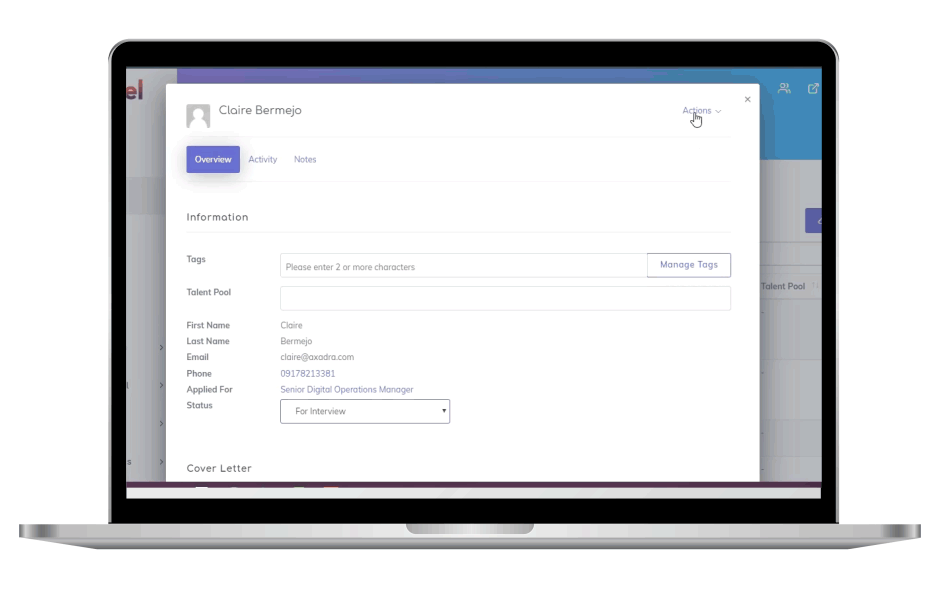Managing HR processes is like being the heartbeat of your organization. You’re tasked with keeping everything running smoothly, ensuring that employees are happy, efficient, and aligned with company goals. But as your company grows, so do the complexities of HR management. If you’ve been relying on spreadsheets to handle tasks like recruitment, onboarding, time tracking, and payroll, you might find yourself spending more time wrestling with formulas than focusing on strategic initiatives.
Enter HR software—a tool designed to streamline these processes, reduce errors, and give you back valuable time. But is it worth trading in your trusty spreadsheets for a shiny new system? Let’s dive into the nitty-gritty of how HR software compares to spreadsheets across different HR processes.
Recruitment
When it comes to recruitment, spreadsheets might feel like an old friend. They’re familiar, flexible, and allow you to create custom tracking systems. You can list candidates, track their progress through the hiring funnel, and even add notes about interviews.
But as the number of candidates grows, so does the complexity. Suddenly, your spreadsheet is bursting with data, and finding the information you need feels like searching for a needle in a haystack.
HR recruitment software, on the other hand, is designed specifically to handle recruitment. It allows you to automate job postings, track applicants in real time, and collaborate with team members without worrying about overwriting someone else’s data.
The best part? HR tools, such as applicant tracking software, often include built-in analytics, giving you insights into your hiring process that an HR spreadsheet simply can’t offer. Imagine being able to see which recruitment channels are bringing in the best candidates or identifying bottlenecks in your hiring process without spending hours crunching numbers.
Onboarding and Offboarding
Onboarding is your chance to make a great first impression on new hires, while offboarding ensures a smooth transition when employees leave. Both processes require meticulous attention to detail, from ensuring all paperwork is completed to setting up (or revoking) access to company systems.
With HR spreadsheets, you’re manually tracking each step, checking off tasks as they’re completed. It works—until something falls through the cracks. Maybe an email gets missed, or someone forgets to update the spreadsheet. The result? A new hire who feels lost or an offboarding employee who still has access to sensitive information.
When compared to spreadsheets, HR software simplifies both onboarding and offboarding by automating tasks and sending reminders to ensure nothing is overlooked. New hires can complete paperwork online, review company policies, and even start their training before day one.
For offboarding, the system can automatically revoke access to company systems, ensuring security. Plus, you can track the progress of each task in real time, giving you peace of mind that everything is under control.
Time and Attendance Tracking
Tracking time and attendance is a fundamental HR task, but it can quickly become a headache if you’re relying on spreadsheets. Manually entering hours worked, vacation days, and sick leave for each employee is time-consuming and prone to errors. Even a small mistake, like entering the wrong number of hours, can lead to payroll issues and unhappy employees.
HR software takes the guesswork out of time tracking. Employees can clock in and out electronically, and the system automatically records their hours. You can easily see who’s on vacation, who’s working overtime, and who might be pushing the limits of their sick leave. And when it’s time to run payroll, all the data is already in the system, ready to go. No more chasing down timesheets or double-checking your math.
Workflow Management
Managing workflows is one of the most important HR best practices and it’s all about keeping things moving smoothly, from the initial job posting to performance reviews and everything in between. Spreadsheets allow you to create custom workflows, but they require a lot of manual effort to maintain. You need to update them constantly, ensure everyone is following the process, and keep track of who’s responsible for what.
HR software, however, is designed to manage workflows seamlessly. It can automate repetitive tasks, send notifications when action is required, and provide a clear overview of where things stand at any given moment.
Need to know if a performance review has been completed? The software can tell you instantly. Need to ensure that a new hire’s paperwork is in order? The system can send reminders to both you and the employee until it’s done. By automating workflows, HR software reduces the risk of human error and ensures that nothing slips through the cracks.
Performance Reviews
Performance reviews are essential for employee development, but they can be a logistical nightmare if you’re using HR spreadsheets. You need to collect feedback from multiple sources, track goals, and document progress over time. Then there’s the challenge of compiling all that data into a coherent review that’s both fair and actionable.
With spreadsheets, you’re likely spending hours (if not days) gathering information, formatting cells, and trying to make sense of it all. And when it comes time for the actual review, you’re stuck with static data that doesn’t offer much in the way of insights.
HR software changes the game by centralizing performance data and making it easy to access. You can track goals, collect feedback, and even set up automated reminders for managers to complete reviews.
The software can also generate reports that highlight trends, helping you identify top performers and areas for improvement. Instead of dreading performance review season, you can approach it with confidence, knowing that you have all the information you need at your fingertips.
Payroll Processes
Payroll is one of the most critical HR functions, and it’s also one where mistakes can have serious consequences. If you’re managing payroll with spreadsheets, you’re likely familiar with the stress of double-checking every number, calculating taxes, and ensuring that everyone gets paid on time. And if something goes wrong—like an incorrect tax calculation or a missed payment—it can take hours to fix.
HR software takes the pain out of payroll by automating the entire process. You can set up pay schedules, calculate taxes automatically, and even handle direct deposits—all without breaking a sweat. The software also integrates with your time and attendance system, so you don’t have to worry about manually entering hours worked.
Plus, it keeps a detailed record of all payroll transactions, making it easy to generate reports and stay compliant with tax regulations. With HR software, payroll goes from a dreaded task to a streamlined process that runs like clockwork.
Compensation Management
Managing compensation is more than just setting salaries; it’s about ensuring fairness, staying competitive, and rewarding top performers. Spreadsheets can help you track compensation data, but they lack the advanced features needed to analyze and manage this information effectively.
HR software offers robust compensation management tools that allow you to track salaries, bonuses, and benefits across your organization. You can set up compensation plans, compare salaries to industry benchmarks, and ensure that your compensation strategy aligns with company goals.
The software also provides analytics that helps you identify pay disparities and make data-driven decisions about raises and promotions. Instead of relying on gut feelings, you can use real data to ensure that your compensation strategy is both fair and effective.
Reports and Analytics
Data is the backbone of modern HR, and spreadsheets can be a powerful tool for analyzing it—if you know what you’re doing. But even the most advanced spreadsheet users can struggle with creating complex reports and generating meaningful insights from raw data. Plus, as your organization grows, the sheer volume of data can become overwhelming.
HR software simplifies the process by providing built-in reporting and analytics tools. You can generate reports on everything from recruitment metrics to employee turnover rates with just a few clicks.
The software also offers advanced analytics that allow you to identify trends, forecast future needs, and make informed decisions. Instead of spending hours poring over spreadsheets, you can access the data you need in real time, giving you the insights you need to drive your HR strategy forward.
HR Software vs. Spreadsheets: The Verdict
So, where does that leave you in the battle between HR software and spreadsheets? Should you stick with spreadsheets or make the leap to HR software? It all comes down to your organization’s needs and goals.
Spreadsheets offer flexibility and familiarity, making them a great choice for small organizations with simple HR needs. If you’re managing a handful of employees and don’t mind spending time on manual tasks, spreadsheets might be sufficient. They allow you to customize your processes and maintain full control over your data.
But as your organization grows, the limitations of spreadsheets become more apparent. The manual effort required to maintain them, the risk of errors, and the lack of advanced features can hinder your ability to manage HR effectively.
HR software, on the other hand, is designed to scale with your organization. It automates repetitive tasks, reduces errors, and provides the tools you need to manage complex HR processes with ease.
In the end, the choice between spreadsheets and HR software depends on where you are and where you want to go. If you’re looking to streamline your HR processes, reduce manual effort, and gain valuable insights, HR software is the way to go. It’s an investment in your organization’s future, one that can pay off in increased efficiency, happier employees, and a more strategic approach to HR management.














